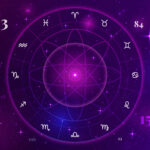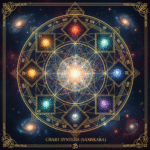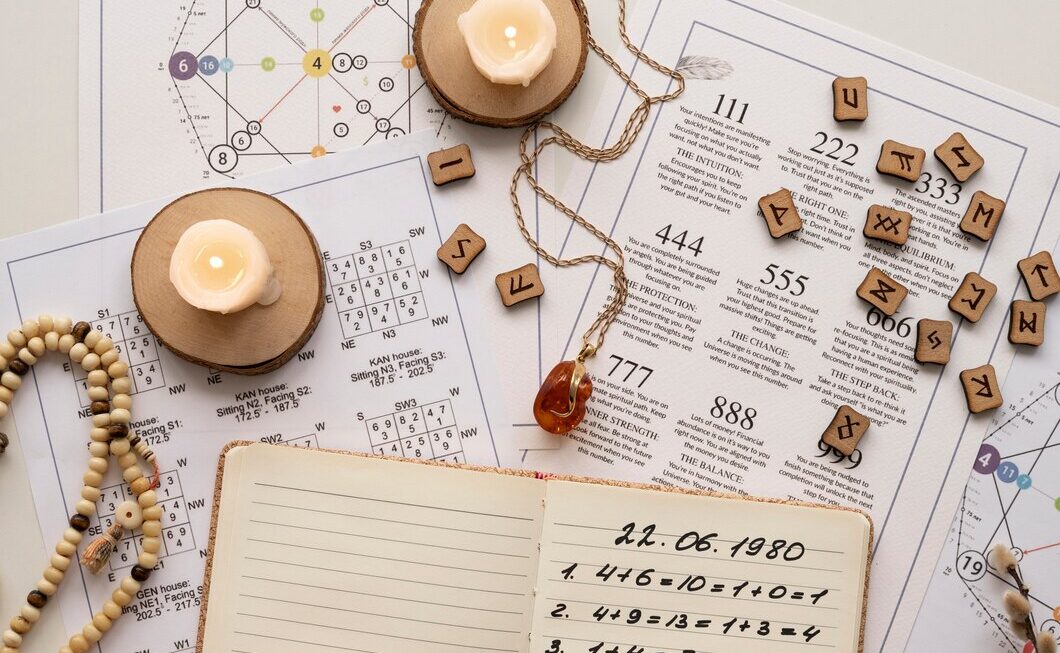As we navigate the sophisticated 36-point matching system of Vedic compatibility, we encounter factors that weigh heavily on the longevity of a marriage. The Vashya Koota is the second factor in the Ashtakoot Milan hierarchy, carrying 2 points (Gunas). While Varna Koota (1 point) assesses spiritual purpose, Vashya Koota dives into the tangible, day-to-day reality of emotional and primal dynamics: mutual attraction and the subtle balance of power. Vashya Kuta assesses the mutual attraction and controllability between the couple, revealing the partners’ willingness to adapt to and influence each other.
This factor seeks to answer a fundamental, often unconscious question in any partnership: Who holds the natural influence, and how does that influence manifest?
In modern terms, the Vashya Koota is the Vedic measure of the inherent pull and control within a relationship. It is an astrological test of charismatic dominance and magnetic submission, offering attraction points that reveal whether two individuals will naturally harmonize or constantly vie for psychological control.
As a senior content writer specializing in Jyotish, I will dissect the five unique Vashya classifications, explain how these primal archetypes inform your Vashya compatibility, and provide a balanced view on its relevance in contemporary, egalitarian relationships.
Decoding Vashya: The Five Primal Archetypes
The term Vashya ($\text{वश्य}$) literally translates to ‘to bring under control,’ ‘to attract,’ or ‘to manage.’ Unlike Varna, which uses four classifications, the Vashya system divides the 12 Moon signs (Rashis) into five distinct classes based on their inherent nature and sphere of influence. These categories use animal and elemental metaphors to describe the psychological and primal energy of the individual.
Understanding these five archetypes is key to grasping the core of Vashya Kuta analysis:
- Manava / Nara (Human): Represents intellect, social awareness, and complexity. This class often seeks balance and negotiation. (Moon Signs: Gemini, Virgo, Libra, some Aquarius).
- Jalchar (Water Creatures): Represents emotional depth, sensitivity, and intuition. They operate best in emotional and fluid environments. (Moon Signs: Cancer, Pisces, some Capricorn).
- Chatushpada (Four-Legged Animals): Represents groundedness, practicality, and sometimes, a certain fixed stubbornness or simplicity of action. (Moon Signs: Aries, Taurus, some Sagittarius, some Capricorn).
- Vanachar (Wild Animals): Represents power, independence, dominance, and leadership. This energy can be fiercely independent. (Moon Sign: Leo).
- Keeta (Insects/Worms): Represents intensity, focus, resourcefulness, and transformative energy, often operating below the surface. (Moon Sign: Scorpio).
The Mechanism of Mutual Attraction Matching (2 Points)
The scoring in Vashya matching is calculated based on the relative influence one Vashya class has over another. The relationship is considered highly compatible (2 points) if one Vashya naturally controls or attracts the other without friction.
| Vashya Combination | Points Awarded | Compatibility Principle |
| Same Vashya Class (e.g., Manava/Manava) | 2 Points (Full Match) | Symmetry: Equal temperament; ease of understanding and control. |
| One controls the Other (e.g., Manava controls Vanachar) | 2 Points (Full Match) | Natural Influence: One partner naturally submits to the other’s charm or power. |
| Vashya is Opposite or Neutral | 1 Point (Half Match) | Compromise: Attraction exists, but requires conscious effort to maintain balance. |
| Vashya is Enemy or Highly Mismatched | 0 Points (No Match) | Conflict: Constant, inherent struggle for psychological and emotional dominance. |
The crucial concept here is not literal control, but the natural flow of influence. A high score indicates that the emotional and charismatic power dynamic is already settled at a primal level, leading to effortless mutual attraction matching.
The OREO Analysis: Power Dynamics in Partnership
In a modern context where independence and equality are paramount, the concept of one partner having ‘control’ over the other can sound problematic. This is where the wisdom of Jyotish must be interpreted with maturity.
Opinion: Vashya Koota Measures the Natural Power Balance, Not Domination
Opinion: The Vashya Koota (2 points) is a critical diagnostic tool in Vedic compatibility that measures the subtle, natural psychological balance and flow of respect between partners, helping them avoid constant battles over emotional territory.
Reason: The Necessity of a Flow of Respect
Reason: Every relationship, whether explicitly acknowledged or not, has a dynamic of influence and deference. If both partners possess the same dominant Vashya energy (e.g., two Vanachar/Lion natures), they will constantly clash, leading to a relentless tug-of-war for control. Conversely, if the pairing is complementary—where one nature instinctively respects and yields to the other’s charisma—the relationship achieves an easy flow. The Vashya compatibility aims to identify where these natural lines of deference are drawn, ensuring that attraction points translate into harmonious functioning, rather than relentless competition. It reveals the who and how of the decision-making process.
Example: Clashing Primal Energies
Consider a pairing with a 0-point Vashya matching—say, one partner is Vanachar (Lion) and the other is Keeta (Scorpion). Both are intense, dominant archetypes, but they operate differently. The Lion seeks open, public acknowledgment and power, while the Scorpion seeks hidden, profound influence and control beneath the surface. This clash is not about love; it’s about method. The Lion will find the Scorpion secretive and manipulative, while the Scorpion will find the Lion boastful and superficial. The attraction points may exist, but the lack of Vashya Kuta harmony warns that their styles of being and controlling their environment are fundamentally antagonistic, leading to a continuous, draining struggle for psychological one-upmanship.
Restatement: A Blueprint for Respect
Therefore, a high Vashya Kuta score signals that your mutual attraction matching includes a healthy, natural, and subconscious respect for your partner’s core personality and influence. A low score doesn’t doom the relationship; it simply necessitates a conscious, deliberate effort to define and respect boundaries, preventing your primal energies from becoming perpetual antagonists.
The Subtle Art of the 2 Points
Why does Vashya score 2 points, placing it above Varna (1 point) but below Tara (3 points)?
Vashya is given a heavier weighting than Varna because it deals with the more immediate, emotional, and psychological friction points that crop up in daily life. Spiritual incompatibility (Varna) can be ignored for a while, but constant power struggles and clashes over mutual attraction (Vashya) quickly erode the fabric of the relationship. The 2 points recognize the direct, persistent emotional wear-and-tear caused by a struggle for influence.
Vashya and the Shadow of Jealousy
The energy of Vashya compatibility is often tied to the subconscious need to either dominate or be dominated, to attract or be attracted. When the match is poor, it can manifest as resentment, possessiveness, and jealousy—all symptoms of a struggle for psychological influence.
- A poor Vashya match means the partners will struggle to feel fully satisfied or in control when they are together.
- A good Vashya match means one partner’s need for security and devotion is easily met by the other’s natural tendency to provide it, resulting in effortless attraction points and emotional safety.
The Relevance of Vashya Matching Today
In modern love marriages, couples often choose partners whose intellectual and professional pursuits are similar (e.g., two Manava/Human Vashyas). This symmetry, which scores full points, suggests an inherent understanding and mutual respect in professional and intellectual life.
However, the risk of a low score remains when two highly dominant archetypes clash. For instance, two Vanachar (Lion) types, both seeking leadership and external validation, may find their home life becoming a constant competition rather than a sanctuary. The Vashya Kuta reminds them to consciously switch roles, allowing the other to be the “Lion” in their respective domains.
The power of this kundli matching system factor lies not in predicting who will wear the metaphorical crown, but in predicting the ease with which the couple will decide who carries which burden and who follows which lead at any given time.
Conclusion: The Attainable Harmony
The Vashya Koota is a crucial, if lightly weighted, piece of the Ashtakoot Milan puzzle. It is the Vedic mechanism for measuring the magnetic polarity and fundamental power dynamics within a union. The resulting attraction points offer deep insight into the natural flow of control, deference, and mutual attraction matching.
A high Vashya score suggests an easy emotional current; a low score warns of an inherent struggle for psychological territory. As we use the entire 36-point matching system, we must interpret the 2 points of Vashya compatibility as a directive: to understand and accept your partner’s primal nature without trying to tame it. Conscious love, open communication about control and influence, and deliberate deference are the modern-day remedies that can always transform a zero-point Vashya into a source of unique, passionate harmony.











